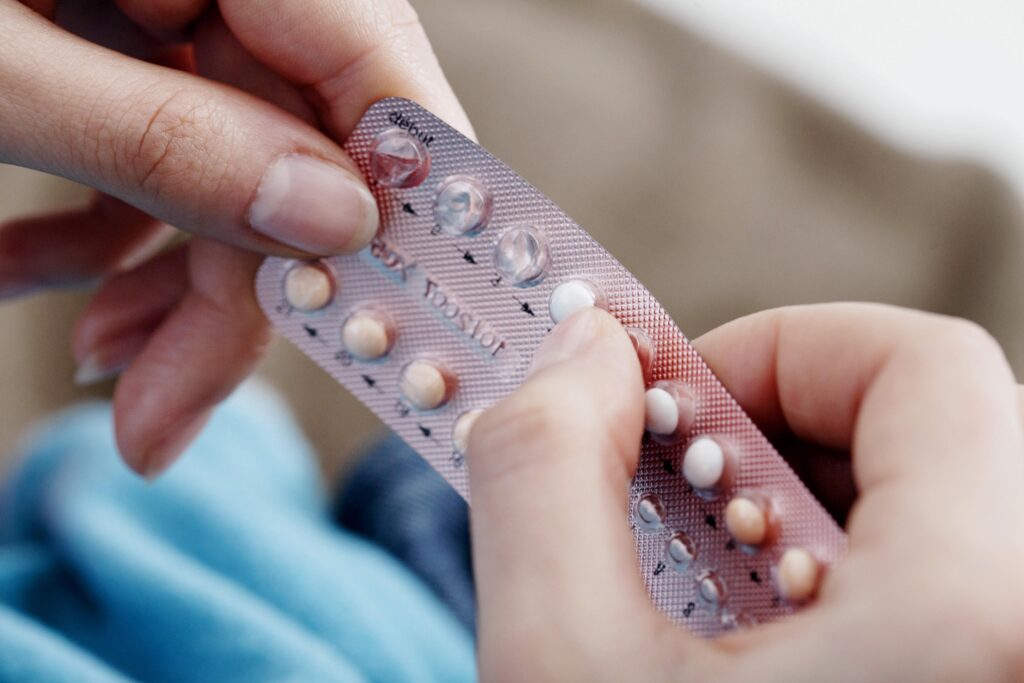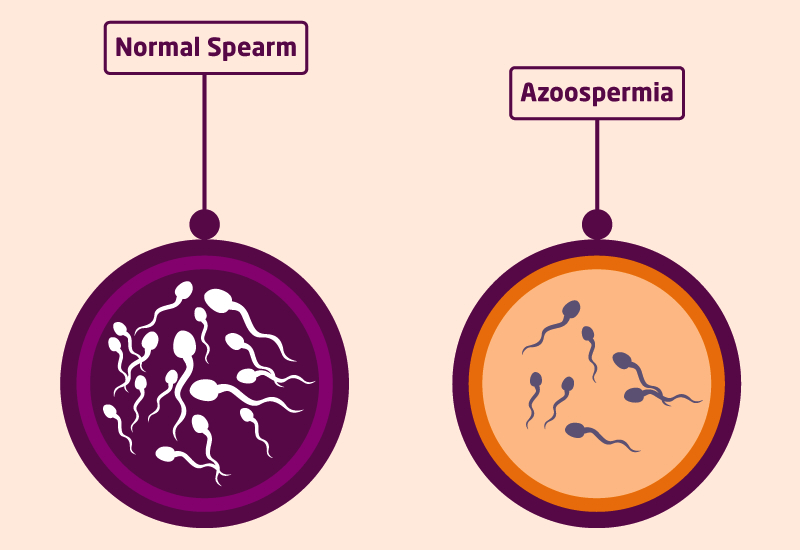Discover the truth about the potential impact of birth control on fertility.
Can Birth Control Make You Infertile?
In today’s world, birth control has become an integral part of many people’s lives. With its ability to prevent unwanted pregnancies, it has undoubtedly revolutionized sexual and reproductive health. However, a question that often arises is whether birth control can make you infertile. In this article, we will explore this topic and shed light on the connection between birth control and infertility.

Understanding Birth Control: A Brief Overview
Before delving into the question at hand, let’s first familiarize ourselves with birth control. It refers to the various methods, both hormonal and non-hormonal, used to prevent pregnancy. These methods work by either inhibiting ovulation, altering the cervical mucus, or impeding the sperm’s movement. With an array of options available, individuals can choose a method that best suits their needs.
Understanding the different types of birth control methods is essential for making an informed decision. Let’s explore some of the most common methods:
Types of Birth Control Methods
There are several types of birth control methods, including hormonal methods such as the pill, patch, and hormonal IUD. These methods work by introducing synthetic hormones into the body, which regulate the menstrual cycle and prevent pregnancy. The pill, taken orally, is one of the most popular methods and is available in different formulations to accommodate individual needs. The patch, on the other hand, is a small adhesive patch that releases hormones through the skin. It is changed weekly to maintain effectiveness. Hormonal IUDs, or intrauterine devices, are small T-shaped devices inserted into the uterus to release hormones locally, providing long-term contraception.
Additionally, non-hormonal methods like barrier methods and natural family planning offer alternatives for those who prefer non-hormonal contraception. Barrier methods, such as condoms, diaphragms, and cervical caps, physically block the sperm’s entry into the uterus. These methods are readily available and provide protection against sexually transmitted infections (STIs) as well. Natural family planning, also known as fertility awareness-based methods, involves tracking fertility signs such as basal body temperature and cervical mucus to determine safe and unsafe days of intercourse. This method requires dedication and consistency but can be an effective option for those who prefer a non-hormonal approach.
How Birth Control Works
Birth control methods function by disrupting the natural reproductive process. Hormonal methods, as mentioned earlier, prevent ovulation or create barriers to fertilization by thickening the cervical mucus. By inhibiting ovulation, these methods ensure that no egg is released for fertilization. The thickened cervical mucus makes it difficult for sperm to swim through the cervix and reach the egg, further reducing the chances of pregnancy.
Barrier methods physically block the sperm’s entry into the uterus. Condoms, for example, create a barrier between the penis and vagina, preventing sperm from reaching the egg. Similarly, diaphragms and cervical caps are inserted into the vagina to cover the cervix, acting as a physical barrier against sperm.
Natural family planning relies on tracking fertility signs to determine safe and unsafe days of intercourse. By monitoring basal body temperature, cervical mucus, and other indicators, individuals can identify their fertile window and abstain from intercourse during that time to avoid pregnancy. This method requires careful observation and understanding of one’s body, but it can be an effective option for those who prefer a natural approach.
Understanding how birth control works is crucial for making an informed decision about which method to choose. It’s important to consult with a healthcare professional to discuss individual needs, potential side effects, and effectiveness of each method.
The Connection Between Birth Control and Infertility
Despite the fears and misconceptions surrounding birth control, scientific research has shown that the use of birth control does not lead to infertility for most individuals. Let’s further explore this connection by examining the available evidence.
When it comes to the relationship between birth control and infertility, a plethora of studies has consistently demonstrated that using birth control does not cause infertility. In fact, many individuals who have actively used birth control for several years have successfully conceived once they stopped using it. The body’s fertility typically returns to its normal state once birth control is discontinued.
One study conducted by the American Society for Reproductive Medicine followed a group of women who had used birth control for an average of five years. The study found that 95% of these women were able to conceive within one year of discontinuing birth control. This research supports the idea that birth control does not have a long-term impact on fertility.
Scientific Research on Birth Control and Infertility
A plethora of studies has consistently demonstrated that using birth control does not cause infertility. In fact, many individuals who have actively used birth control for several years have successfully conceived once they stopped using it. The body’s fertility typically returns to its normal state once birth control is discontinued.
Another study published in the Journal of Obstetrics and Gynaecology Canada examined the impact of various birth control methods on fertility. The researchers found that hormonal contraceptives, such as the pill or the patch, did not affect long-term fertility. In fact, they concluded that there was no evidence to support the claim that birth control causes infertility.
Furthermore, a meta-analysis conducted by the Cochrane Collaboration, which reviewed multiple studies on the topic, found no significant association between the use of birth control and infertility. The analysis included data from thousands of participants and concluded that birth control does not have a detrimental effect on future fertility.
Misconceptions About Birth Control and Infertility
Despite the evidence suggesting otherwise, misconceptions about birth control persist. One prevalent misunderstanding is that long-term use of birth control can permanently impair fertility. This misconception stems from a misunderstanding of the temporary nature of birth control’s effects on fertility.
It is important to note that while individual experiences may vary, most people can conceive after discontinuing birth control methods. The temporary suppression of fertility while using birth control is not indicative of long-term infertility. The body’s natural reproductive processes resume once birth control is no longer used.
Another misconception is that certain types of birth control, such as intrauterine devices (IUDs), can cause infertility. However, research has shown that IUDs do not have a lasting impact on fertility. In fact, IUDs are considered one of the most effective forms of contraception and do not affect future fertility once removed.
It is essential to separate fact from fiction to make informed decisions about contraception. Understanding the scientific evidence surrounding birth control and infertility can help individuals make choices that align with their reproductive goals.
Short-Term and Long-Term Effects of Birth Control
Birth control, like any medication or intervention, can have both short-term and long-term effects on the body. Understanding these effects is crucial for making well-informed decisions regarding its use.
When it comes to birth control, it’s important to consider not only its immediate effects but also the potential long-term implications. While some individuals may experience side effects when starting hormonal birth control, such as changes in menstrual bleeding, breast tenderness, or mood swings, it’s essential to remember that these effects are generally temporary. The body typically adjusts to the hormones within a few months, and the side effects subside.
However, the effects of birth control extend beyond the short-term. Numerous studies have shown that using hormonal birth control methods for an extended period does not have a negative impact on future fertility. This means that individuals who choose to use birth control for an extended period can have peace of mind knowing that their ability to conceive in the future is not compromised.
In fact, some forms of birth control, such as the hormonal IUD, may even offer certain health benefits. Research has suggested that the hormonal IUD can reduce the risk of certain cancers, including endometrial and ovarian cancers. This is due to the progestin hormone released by the IUD, which helps to regulate the growth of the uterine lining and prevent abnormal cell growth.
Moreover, long-term use of birth control methods can also provide relief from various menstrual-related symptoms. For individuals who experience heavy or painful periods, hormonal birth control can help alleviate these symptoms by reducing the amount of uterine lining that builds up each month. This can lead to lighter and less painful periods, improving the overall quality of life for those who choose to use birth control as a long-term solution.
It’s worth noting that while birth control methods have numerous benefits, they may not be suitable for everyone. It’s essential to consult with a healthcare provider to determine the most appropriate form of birth control based on individual needs and medical history. They can provide personalized guidance and address any concerns or questions regarding the short-term and long-term effects of birth control.
In conclusion, birth control has both short-term and long-term effects on the body. While some individuals may experience temporary side effects when starting hormonal birth control, the body typically adjusts to the hormones within a few months. Long-term use of birth control methods does not negatively impact future fertility and may even offer certain health benefits, such as reducing the risk of certain cancers. It’s important to consult with a healthcare provider to determine the most suitable form of birth control based on individual needs and medical history.
Factors That Influence Fertility
While birth control itself does not cause infertility, various factors can influence a person’s fertility. Let’s delve into two significant factors: age and lifestyle.
Age and Fertility
Age plays a crucial role in fertility. As individuals get older, the quality and quantity of their eggs decrease, making it more challenging to conceive. While birth control does not directly impact this natural aging process, it can delay pregnancy, which may be a concern for those who wish to conceive later in life.
Lifestyle Factors and Fertility
Lifestyle factors such as smoking, excessive alcohol consumption, and certain medical conditions like polycystic ovary syndrome (PCOS) can affect fertility. It is important to consider these aspects when exploring the potential causes of infertility, rather than attributing it solely to birth control.
Alternatives to Hormonal Birth Control
If concerns about hormonal birth control and its effects on fertility arise, there are alternatives available that can provide effective contraception without hormonal interventions.
Barrier Methods of Contraception
Barrier methods like condoms, diaphragms, and cervical caps offer non-hormonal options for contraception. These methods physically prevent sperm from reaching the uterus, providing contraception without affecting hormonal balance.
Natural Family Planning Methods
Natural family planning methods involve tracking fertility signs, such as basal body temperature and cervical mucus to determine when it is safe to have intercourse. When used correctly, these methods can be highly effective in preventing pregnancy.
In conclusion, the use of birth control does not make you infertile. Scientific research has consistently proven that most individuals regain their fertility after discontinuing birth control methods. Understanding the short-term and long-term effects of birth control, as well as the various factors that can influence fertility, allows individuals to make informed decisions about their reproductive health. Whether choosing hormonal or non-hormonal contraception, it is essential to explore and understand the available options to make the best choice for one’s individual needs and preferences.




